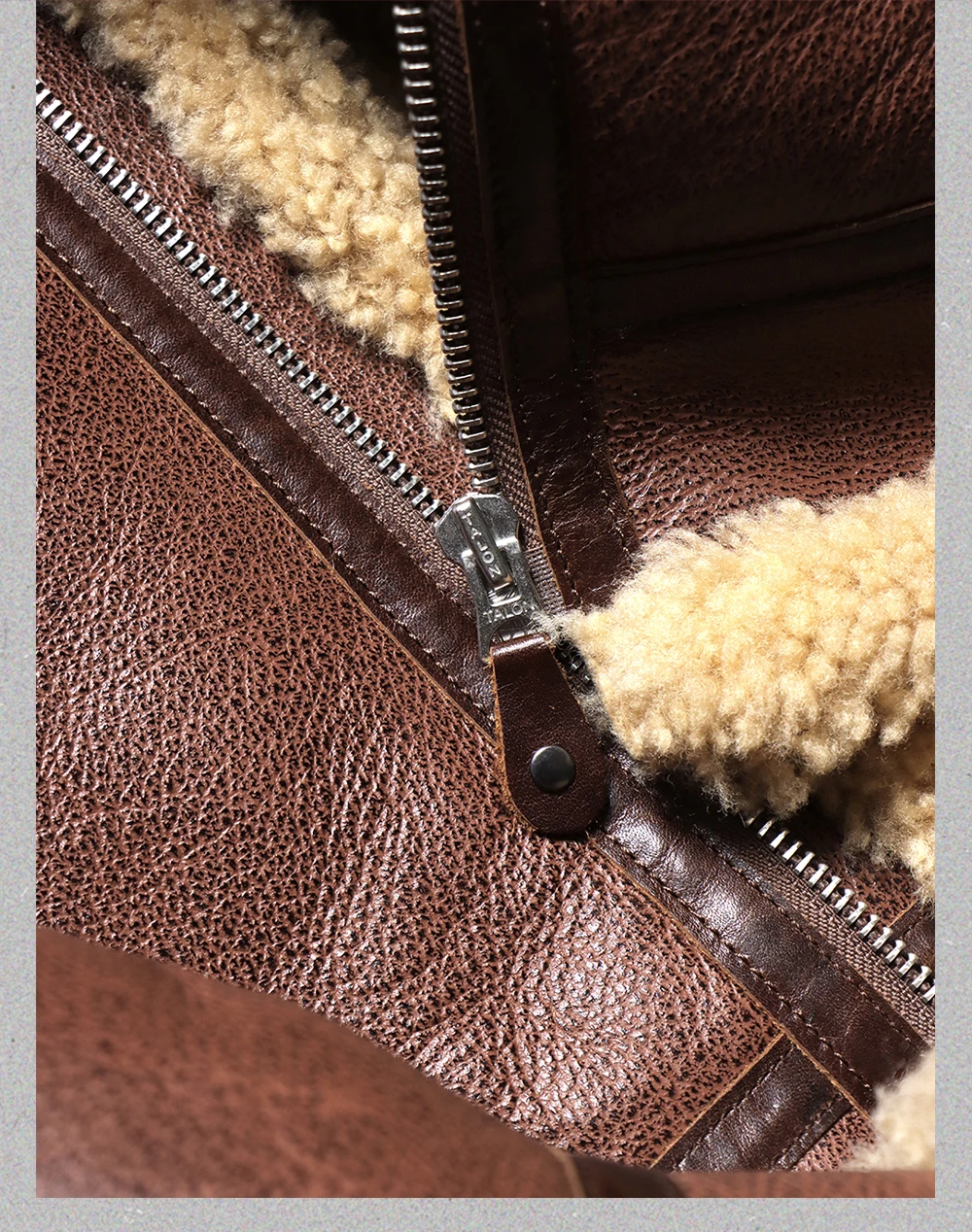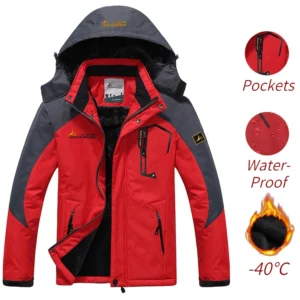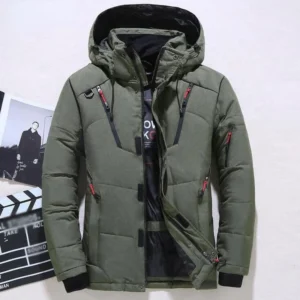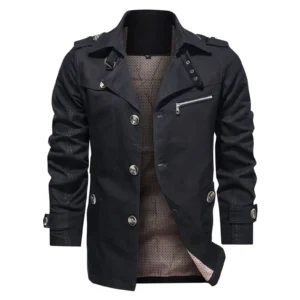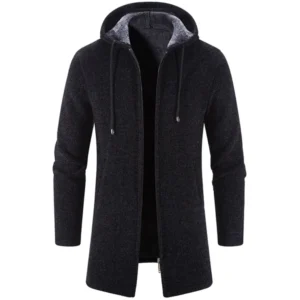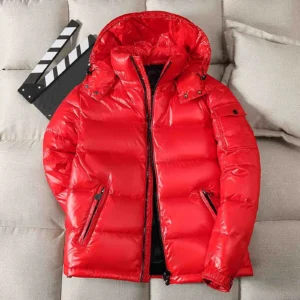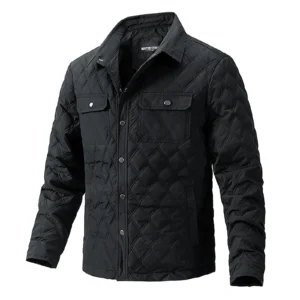Why Winter Jackets Don’t Have Simple Temperature Ratings
When shopping for winter outerwear, you might notice something puzzling: unlike sleeping bags with their clear temperature ratings (like “comfortable to 20°F”), most winter jackets don’t come with straightforward temperature guidelines. This isn’t an oversight—it’s due to the complex nature of how jackets function in real-world conditions.
Winter jackets fundamentally differ from sleeping bags because they’re used in dynamic environments while performing various activities. A single temperature rating simply can’t account for all the variables that affect how warm you’ll feel, including:
- Activity level – Someone hiking vigorously might feel perfectly warm in 20°F weather in a lightweight jacket, while someone standing still would feel freezing in the same conditions
- Individual metabolism – Some people naturally run hot while others feel cold easily
- Layering choices – The same jacket performs differently over a thin t-shirt versus proper base and mid layers
- Environmental factors – Humidity, wind chill, and precipitation dramatically affect perceived temperature
- Jacket design elements – Understanding jacket fit and length significantly impacts warmth, as do features like draft collars and cuff designs
Some brands have attempted to create proprietary rating systems—like Arc’teryx’s Temperature Range designations or Canada Goose’s Thermal Experience Index—but these remain subjective guidelines rather than scientific certainties.
More technically, insulation can be measured using CLO value, a scientific unit measuring thermal resistance. However, this measurement rarely appears on consumer products because it doesn’t translate easily to real-world experience.
The Science of Insulation: How Winter Jackets Create Warmth
At its core, a winter jacket works by creating a barrier that prevents your body heat from escaping into the colder environment. The fundamental principle is simple: insulation materials trap pockets of “dead air” that your body warms up, creating a thermal barrier around you.
Heat transfers in three main ways: conduction (direct contact), convection (air currents carrying away heat), and radiation (heat waves emanating outward). Effective winter jackets combat all three. The insulation traps air to prevent conductive and convective heat loss, while the outer shell reflects radiative heat back toward your body.
This delicate balance between insulation, breathability, and moisture management determines a jacket’s performance. Too little breathability, and your perspiration builds up, eventually compromising insulation. Too much, and warm air escapes too readily.
The thickness of the insulation, its ability to trap air, and how it performs when compressed or damp all contribute to the jacket’s thermal efficiency in different conditions.
Down Insulation: Understanding Fill Power and Fill Weight
Down insulation—the soft, fluffy undercoating found beneath the feathers of ducks and geese—has been prized for centuries for its exceptional warmth-to-weight ratio. But not all down is created equal, and understanding two key measurements will help you assess its quality and warmth potential.
Fill Power measures the quality and loftiness of down, specifically how many cubic inches one ounce of down fills when allowed to reach its maximum loft under standard laboratory conditions. Higher numbers indicate better insulating properties:
- 550-650 fill power: Good quality, entry-level down
- 700-800 fill power: High-quality down with excellent warmth-to-weight
- 850+ fill power: Premium down offering exceptional loft and insulation
Fill Weight refers to the actual amount of down used in a jacket, typically measured in ounces. This is equally important for determining warmth:
- A jacket with 3 oz of 800 fill power down might be less warm than one with 6 oz of 650 fill power down
- The optimal coat length for maximum insulation also affects how much fill weight is needed for adequate coverage
Down insulation offers several advantages:
* Unmatched warmth-to-weight ratio
* Exceptional compressibility
* Impressive durability (can last decades with proper care)
* Natural breathability
However, it also has disadvantages:
* Poor performance when wet (loses insulating properties)
* Longer drying time
* Higher cost than synthetic alternatives
* Requires special cleaning and maintenance
Many premium winter coats now feature hydrophobic down treatments that apply a water-resistant coating to each down cluster, improving performance in damp conditions. Additionally, responsible down sourcing (RDS certification) ensures ethical treatment of the birds used for down harvesting.
Synthetic Insulation: Types and Warmth Ratings
Synthetic insulation emerged as an alternative to down, composed of polyester fibers engineered to mimic down’s loft and warmth-trapping abilities. Unlike down’s fill power measurement, synthetic insulation is typically measured by weight (grams per square meter or g/m²), with higher numbers indicating warmer insulation.
Synthetic insulations fall into two main construction categories:
* Continuous filament – Longer, unbroken fibers that provide greater durability but less compressibility
* Short-staple – Shorter fibers that offer better compressibility but may shift and create cold spots over time
Popular synthetic insulations include:
| Insulation Type | Warmth Level | Best For | Notable Properties |
|---|---|---|---|
| PrimaLoft Gold | High | Technical activities | Excellent warmth-to-weight, water-resistant |
| PrimaLoft Silver | Medium-High | All-around use | Good balance of warmth, weight and cost |
| Thinsulate | Medium | Everyday wear | Thin profile, good for layering |
| Polartec Alpha | Medium | High-output activities | Superior breathability, quick-drying |
| Polartec Thermal Pro | Medium-High | Cold, dry conditions | Excellent loft, various textures |
Synthetic insulation offers several advantages:
* Maintains warmth when wet
* Dries much faster than down
* Generally more affordable
* Allergen-free
* Easier to care for
The drawbacks include:
* Heavier than down for equivalent warmth
* Less compressible
* Typically shorter lifespan (breaks down faster)
* Often less breathable
“Active insulation” represents the newest generation of synthetics, designed specifically for high-exertion activities with enhanced breathability and moisture management properties.
Comparing Down vs. Synthetic for Different Weather Conditions
Choosing between down and synthetic insulation often comes down to matching the material properties to your expected conditions:
| Weather Condition | Down Performance | Synthetic Performance | Better Choice |
|---|---|---|---|
| Dry, very cold (-10°F and below) | Excellent | Good | Down |
| Wet, cold (rain, wet snow) | Poor (unless treated) | Excellent | Synthetic |
| Cold with variable conditions | Good with shell | Very good | Synthetic |
| Cold, dry with low activity | Excellent | Good | Down |
| Cold with high activity | Fair (can overheat) | Excellent | Synthetic |
Many premium hooded winter coats now feature hybrid insulation designs that place synthetic insulation in moisture-prone areas (hood, shoulders, cuffs) and down in core areas that stay drier, giving you the best of both worlds.
Generally, choose down for:
* Extremely cold, dry environments
* Activities with stop-and-go movement
* When weight and packability are crucial
Choose synthetic for:
* Consistently wet environments
* Sustained high-output activities
* When budget considerations are important
Beyond Insulation: Shell Fabrics and Warmth Retention
While insulation creates warmth, the outer shell fabric plays a crucial role in maintaining it. Shell materials serve as the first line of defense against elements that can compromise insulation performance.
Fabric Denier measures the thickness of individual threads in the shell fabric. Higher numbers indicate thicker, more durable (but often heavier) fabrics:
* 10D-20D: Ultralight shells (fragile but very packable)
* 30D-50D: Standard balance of weight and durability
* 60D+: Heavy-duty, abrasion-resistant shells
Wind dramatically accelerates heat loss, making windproofing crucial. A windproof membrane or tight weave can make a jacket feel significantly warmer without adding insulation. Understanding different materials that enhance temperature regulation helps you make more informed choices.
Waterproofing is measured by hydrostatic head ratings, indicating how much water pressure the fabric can withstand:
* 5,000mm: Light rain resistance
* 10,000mm: Standard waterproofing for moderate conditions
* 20,000mm+: Severe weather protection
Most winter jackets also feature DWR (Durable Water Repellent) treatments that make water bead up and roll off rather than saturating the outer fabric. This treatment maintains breathability while providing initial water resistance.
Breathability ratings (measured in grams of water vapor per square meter per 24 hours) indicate how efficiently moisture escapes from inside the jacket. Higher numbers mean better moisture management during activity.
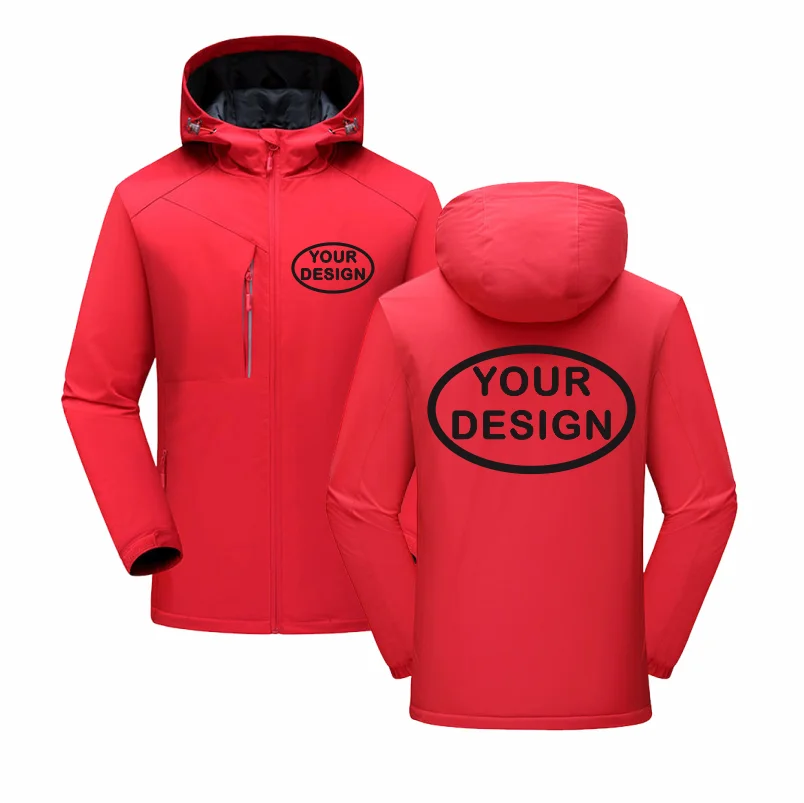
Construction Features That Enhance Winter Jacket Warmth
How a jacket is constructed can be as important as the materials used. Several design elements significantly impact thermal efficiency:
Baffle Construction determines how insulation is distributed and secured:
* Sewn-through construction: Stitching pierces both outer and inner fabric layers, creating potential cold spots but reducing weight
* Box wall construction: Uses internal fabric walls to create three-dimensional chambers for insulation, eliminating cold spots but adding weight
* Offset quilting: Staggers seams between inner and outer layers to prevent straight heat-loss paths
Other critical construction features include:
* Seam sealing – Taped or welded seams prevent wind and moisture penetration
* Hood design – Insulated, adjustable hoods with wire brims provide customizable protection
* Draft tubes – Insulated channels behind zippers prevent heat loss through zipper teeth
* Hem and cuff closures – Adjustable, sealed openings prevent warm air from escaping
* Storm flaps – Additional fabric layers covering zippers and openings
* Collar design – Insulated, close-fitting collars prevent heat escape around the neck
* Articulated design – Patterning that allows movement without exposing gaps
These features are particularly important in jackets with advanced construction features for extreme cold, where every detail matters for survival in harsh conditions.
Decoding Brand-Specific Temperature Rating Systems
Some premium outerwear brands have developed their own systems to help consumers understand jacket warmth:
| Brand | Rating System | How It Works |
|---|---|---|
| Canada Goose | Thermal Experience Index (TEI) | 1-5 scale from “lightweight” (5°C/40°F) to “extreme” (-30°C/-22°F and below) |
| Arc’teryx | Temperature Range | Broad categories like “mild” or “severe” with approximate ranges |
| The North Face | Temperature Range Guides | Activity-specific ranges (e.g., “hiking in 20-30°F”) |
| Patagonia | H2No Performance Standard | Focuses on weather protection rather than temperature |
While helpful as general guidelines, these systems have limitations:
* They typically assume proper layering underneath
* They’re based on “average” metabolisms and activity levels
* They don’t account for individual cold sensitivity
* They often represent ideal, not worst-case conditions
Use these ratings as starting points rather than absolute guarantees of comfort at specific temperatures.
The Layering Strategy: Maximizing Your Jacket’s Warmth
The true secret to staying warm isn’t just about choosing the right jacket—it’s about creating an effective layering system that works together. The classic three-layer approach remains the gold standard:
Base Layer: Sits directly against your skin
* Purpose: Moisture management and initial insulation
* Materials: Merino wool, synthetic performance fabrics (avoid cotton)
* Properties: Should be form-fitting and moisture-wicking
Mid Layer: Provides primary insulation
* Purpose: Trapping warm air
* Materials: Fleece, down sweaters, wool, synthetic insulation
* Properties: Balances warmth with breathability
Outer Layer: Your winter jacket
* Purpose: Weather protection and additional insulation
* Materials: Waterproof/windproof shells with down or synthetic insulation
* Properties: Blocks elements while allowing moisture to escape
Understanding the impact of coat length on layering strategy helps create a more effective system, as longer coats provide more coverage but may limit mobility.
Different temperature ranges require different approaches:
* For mild cold (30-40°F): Light base layer + mid layer + lightweight shell
* For moderate cold (15-30°F): Medium-weight base + insulating mid layer + insulated jacket
* For severe cold (below 15°F): Heavy base layer + thick mid layer + heavy winter jacket
Always adjust for activity level—high-exertion activities require less insulation but more breathability.
How to Choose the Right Winter Jacket Warmth for Your Needs
Selecting the ideal winter jacket requires matching your specific needs to the jacket’s capabilities:
First, assess your personal factors:
* What temperature range will you typically face?
* How active will you be while wearing it?
* How long will you be exposed to the cold?
* Do you tend to run hot or cold?
* What layering system will you use underneath?
Then match these to appropriate jacket types:
For urban commuting (moderate exposure, variable activity):
* Moderate insulation with good wind protection
* Features for transition between outdoor/indoor environments
* Stylish designs that work with business/casual attire
For winter hiking/backpacking (sustained exposure, high activity):
* Emphasis on breathability and moisture management
* Lightweight insulation that performs when damp
* Packability for changing conditions
For alpine adventures (extreme conditions, variable activity):
* Maximum insulation for stationary periods
* Excellent weather protection
* Robust construction and safety features
For everyday casual wear (intermittent exposure, light activity):
* Balance of warmth and style
* Easy care and maintenance
* Versatile features for various conditions
Remember to choose a fit that accommodates your planned layering system—too tight restricts insulation loft and circulation, while too loose allows cold air infiltration.

Specialized quilted coat designs offer targeted insulation zones that provide warmth where needed while reducing bulk in high-mobility areas.
Mens Heavy Winter Coat, Mens Insulated Coat, Mens Parka Coat
Price range: $175.52 through $237.36 Select options This product has multiple variants. The options may be chosen on the product pageMens Big and Tall Winter Coats, Mens Down Coat, Mens Hooded Winter Coat, Mens Puffer Coat
Price range: $126.44 through $217.01 Select options This product has multiple variants. The options may be chosen on the product pageMens Big and Tall Winter Coats, Mens Hooded Winter Coat
Price range: $80.32 through $106.68 Select options This product has multiple variants. The options may be chosen on the product pageMens Cashmere Overcoat, Mens Hooded Winter Coat, Mens Wool Blend Coat
Price range: $128.72 through $139.68 Select options This product has multiple variants. The options may be chosen on the product pageMens Hooded Winter Coat, Mens Insulated Coat, Mens Puffer Coat, Mens Quilted Coat
Price range: $139.88 through $177.72 Select options This product has multiple variants. The options may be chosen on the product pageMens Double Breasted Pea Coat, Mens Hooded Winter Coat, Mens Quilted Coat
Price range: $81.00 through $108.48 Select options This product has multiple variants. The options may be chosen on the product page
Maintaining Your Jacket’s Warmth Performance Over Time
Even the highest-quality winter jacket will lose its warming effectiveness without proper care. Maintenance requirements differ significantly between insulation types:
For Down Jackets:
* Clean only when necessary using down-specific detergents
* Wash in front-loading machines on gentle cycle
* Dry thoroughly on low heat with clean tennis balls to restore loft
* Store uncompressed on hangers in dry environments
* Never store damp or dirty
For Synthetic Jackets:
* More washing-machine friendly, but use technical detergents
* Avoid fabric softeners that coat fibers and reduce performance
* Dry on low heat
* Can be stored with slight compression
* Still requires complete drying before storage
For all jackets, maintain the DWR treatment by:
* Reactivating with low heat after washing
* Reapplying with spray-on or wash-in treatments when water stops beading
* Cleaning surface dirt that reduces DWR effectiveness
Remember that excessive compression damages insulation over time—avoid stuffing jackets into tight spaces for extended periods.
Winter Jacket Technologies: New Innovations in Cold Weather Protection
The world of winter jacket technology continues to evolve with remarkable innovations:
Advanced Insulation Materials:
* Graphene-enhanced fabrics that distribute heat more evenly across the body
* Aerogel insulation (originally developed for NASA) offering incredible warmth with minimal thickness
* Body-mapped construction placing different insulation weights where most needed
* Sustainable insulations made from recycled plastic bottles or plant-based materials
Reflective Technologies:
* Aluminum-coated linings that reflect body heat back toward the wearer
* Ceramic-printed fabrics that absorb and redistribute heat
* Phase-change materials that store and release heat as needed
Smart Features:
* Battery-powered heating elements integrated into critical areas
* App-controlled temperature adjustment systems
* Ventilation systems that open automatically based on body temperature
Premium natural insulation options like shearling combine traditional materials with modern construction techniques for exceptional warmth with natural temperature regulation.
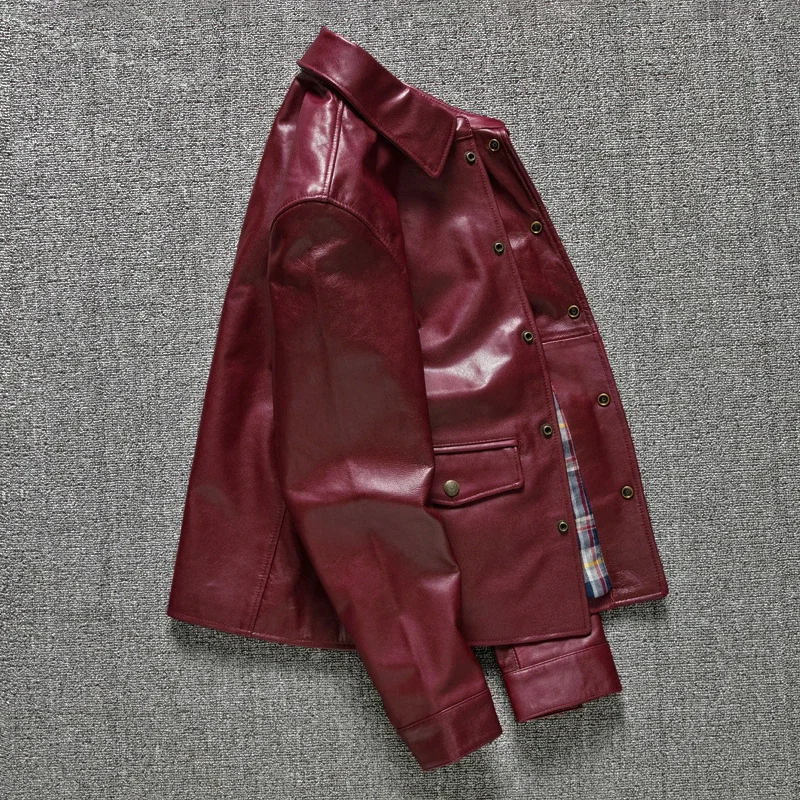
FAQs: Common Questions About Winter Jacket Warmth
Is a higher fill power always better?
Not necessarily. Higher fill power down provides more warmth per ounce, but if the total fill weight is low, a jacket with lower-quality down but more of it might be warmer overall.
Can I make my existing jacket warmer?
Yes. Improving your layering system, adding a windproof shell over it in severe conditions, maintaining its DWR coating, and ensuring proper fit can all enhance warmth.
How do I know if my jacket is warm enough without a temperature rating?
Evaluate the insulation type and quantity, shell materials, construction features, and compare to similar jackets with known performance. When in doubt, layer.
Do men’s and women’s jackets have different warmth needs?
On average, women tend to feel cold more easily than men due to physiological differences. Women’s jackets sometimes feature additional insulation in core areas to address this.
How much does weight correlate with warmth?
While there’s some correlation, weight alone isn’t a reliable indicator. Modern premium insulators can provide exceptional warmth with minimal weight.
Are expedition jackets overkill for everyday use?
Usually yes. They’re designed for extreme conditions and sustained exposure, making them unnecessarily bulky and warm for typical urban environments.
Finding Your Perfect Winter Balance: Warmth Without Bulk
The ultimate goal when selecting winter outerwear is finding your personal balance between adequate warmth and practical functionality. Metro Cloak understands that the perfect jacket provides protection without restricting movement or creating unnecessary bulk.
Modern insulation technology allows for remarkable warmth without the marshmallow-man effect that characterized winter jackets of the past. Lightweight yet highly insulating options provide exceptional performance while maintaining a refined silhouette.
Consider your personal cold sensitivity and typical use cases when making your selection. Someone who runs cold might need more insulation for the same conditions than someone who naturally generates more heat. Similarly, your typical activity level dramatically impacts your ideal insulation level—standing at a bus stop requires more protection than a brisk winter walk.
The smart approach often involves investing in versatile pieces that work together as a system rather than a single heavy jacket. This adaptability allows you to adjust to changing conditions and activity levels throughout the winter season.
Remember that proper fit remains essential—a jacket should allow comfortable movement with your typical layers while minimizing air gaps around openings. With the right combination of quality materials, thoughtful design, and appropriate layering, you can stay warm and comfortable in virtually any winter condition.

